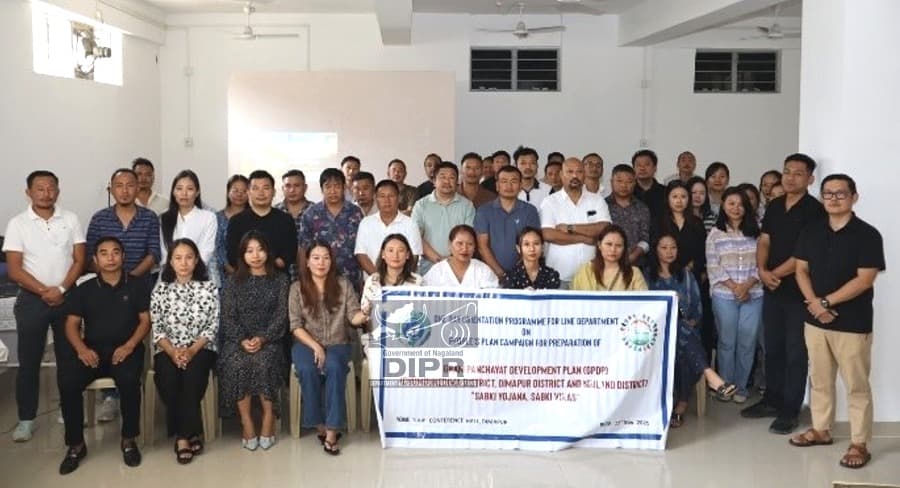District-level training on Panchayat Advancement Index 2.0 was conducted for Dimapur, Niuland and Chümoukedima to enhance data accuracy.
Share

DIMAPUR — A district-level training on Panchayat Advancement Index (PAI 2.0) for block officials and concerned departments under the Revamped Rashtriya Gram Swaraj Abhiyan (RGSA) was held at the Tulip Conference Hall, Duncan Basti, Dimapur, on Wednesday.
The training was organised by the State Institute of Rural Development (SIRD), Nagaland, as part of the ongoing initiative for the implementation and data collection of PAI 2.0 in the districts of Dimapur, Niuland, and Chümoukedima, according to a DIPR report.
The programme was attended by all district heads of departments from the concerned line departments and block officials, along with two representatives from each office.
The training aimed to familiarise the participants with the PAI 2.0 framework and methodology for data entry, validation, and timely submission to ensure accuracy and consistency across departments.
In his inaugural address, Project Director, Dimapur, Limameren Yaden, emphasised the relevance of PAI 2.0 as a scientific tool for bottom-up planning that enables panchayats to identify local needs and monitor progress. He urged participants to engage sincerely throughout the training to understand the framework and methodology for accurate implementation in their respective districts.
Read more local news: USSC inspects works for finance minister Nirmala Sitharaman’s visit to Kiphire
NHHDC handloom exhibition underway in Dimapur
Consultant RGSA, Risuhli Rhakho, highlighted the concept of PAI 2.0, explaining that it is an assessment index to measure a village’s advancement in achieving nine Local Sustainable Development Goals (LSDG) themes—poverty-free and enhanced livelihood panchayat, healthy panchayat, child-friendly panchayat, water-sufficient panchayat, clean and green panchayat, self-sufficient infrastructure panchayat, socially just and secured panchayat, panchayat with good governance, and women-friendly panchayat.
She informed that PAI will involve multiple user levels—state, district, and block—managed by nodal officers, while village-level data will be handled by the VDB secretary. Data will be initially submitted by VDB secretaries and validated at the block level, followed by verification by district-level officials. The validated district data will then be reviewed at the state level, and a final assessment will be conducted by the Ministry of Panchayati Raj for PAI scoring.
Rhakho explained that PAI comprises 150 indicators (numeric and binary) and 178 unique data points to be filled by the VDB secretary. Fifty-eight data points will be auto-ported from various departmental websites and compiled based on the Local Indicator Framework (LIF), which includes specific themes, indicators, and data sources. She stated that the role of line departments includes nominating nodal officers at the state, district, and block levels, ensuring data quality, monitoring progress, and timely validation of PAI 2.0 data.
She added that PAI data will be utilised for the National Panchayat Award 2025, to be held annually in November, with awards based on each village’s performance across the nine LSDGs. The PAI scorecard will be accessible through the PAI portal after final calculations by the central ministry, enabling villages to identify weaker areas and plan future development activities accordingly.
Rhakho stated that the PAI assessment index will continue to be used in future years to evaluate village development across sectors and assist in achieving SDGs. PAI details are available at pai.gov.in.